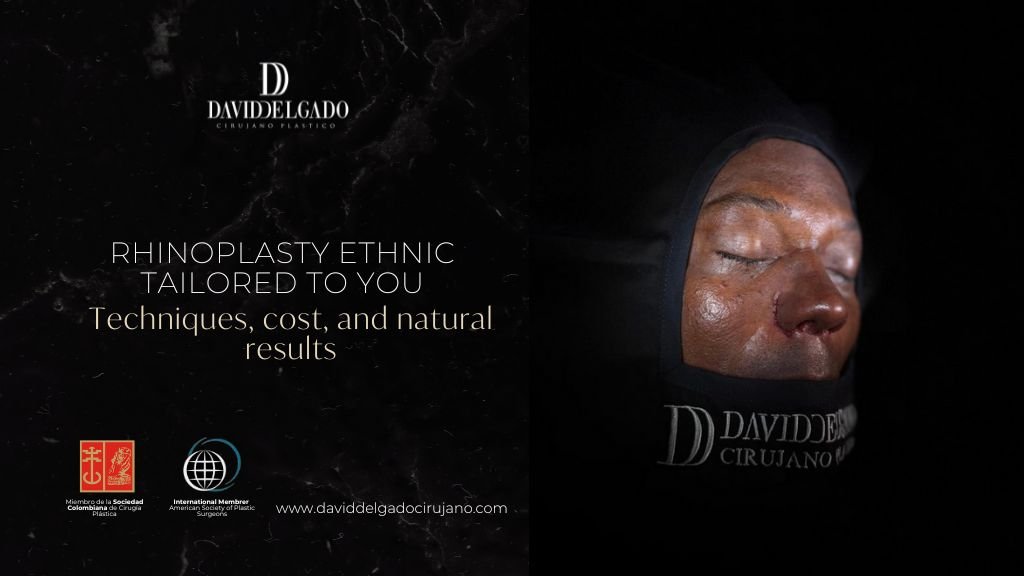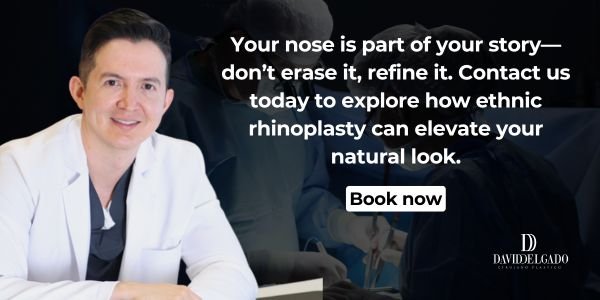As a facial plastic surgeon who’s had the honor of working with patients from all over the world, I’ve come to understand something essential: beauty is deeply personal—and so is identity. Ethnic rhinoplasty is more than just reshaping a nose. It’s about enhancing your features while honoring the unique cultural and genetic traits that make you who you are. Whether you’re of African, Asian, Middle Eastern, or Latin American descent, the goal isn’t to erase your identity—it’s to refine and elevate it with care, precision, and respect.
If you’ve ever looked in the mirror and imagined subtle changes to your nose—but worried about losing your natural look—you’re not alone. Many of my patients come to Medellín asking the same questions you probably have: Will I still look like me? Will people notice I had surgery? Will the results look natural? The answer is yes—when ethnic rhinoplasty is done thoughtfully and with an expert understanding of facial harmony. That’s exactly what I offer in my practice: personalized care, advanced techniques, and natural results that speak to who you are—not who someone else thinks you should be.
What Is ethnic rhinoplasty?
Ethnic rhinoplasty is a type of nose surgery specifically designed for patients who are not of Caucasian descent. That includes individuals of African, Asian, Middle Eastern, Latin American, Indigenous, or mixed backgrounds. As a surgeon, my job isn’t just to perform a rhinoplasty—it’s to understand your anatomy, your aesthetic goals, and most importantly, your cultural identity.
This procedure recognizes that ethnic noses often have unique characteristics that require a different approach than traditional (Caucasian-style) rhinoplasty. For example, ethnic noses may have a wider nasal base, thicker skin, or a flatter nasal bridge—all completely normal and beautiful traits. My role is not to “Westernize” these features, but to refine them in a way that enhances facial balance while keeping your natural heritage intact.
In this blog, I’ll focus especially on patients of African descent, since I’ve seen a growing number of men and women from across the Americas and the Caribbean traveling to Medellín to work specifically on these nasal features. That said, I’ve worked with patients from all over the world—and I tailor every procedure to each person’s specific ethnic traits, bone structure, and personal vision.
If you’re someone who’s been told your nose is «too different» for rhinoplasty, I’m here to tell you: that’s not true. You don’t need to change your identity—you just need someone who understands it.
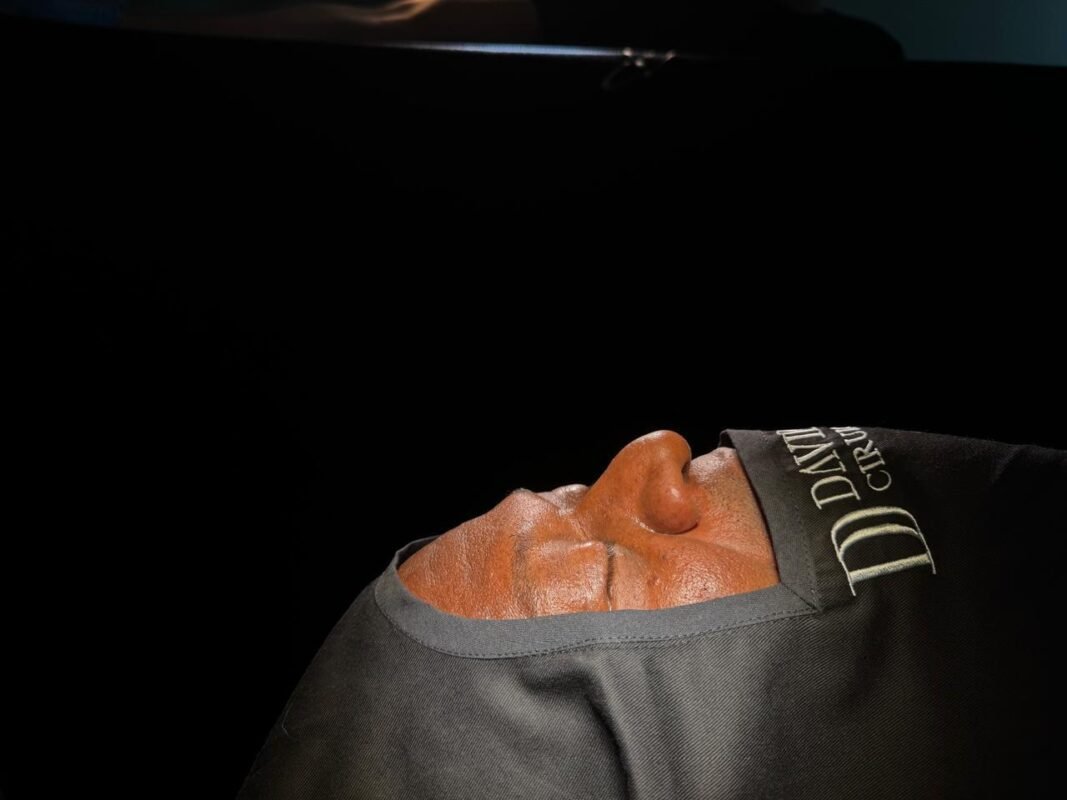
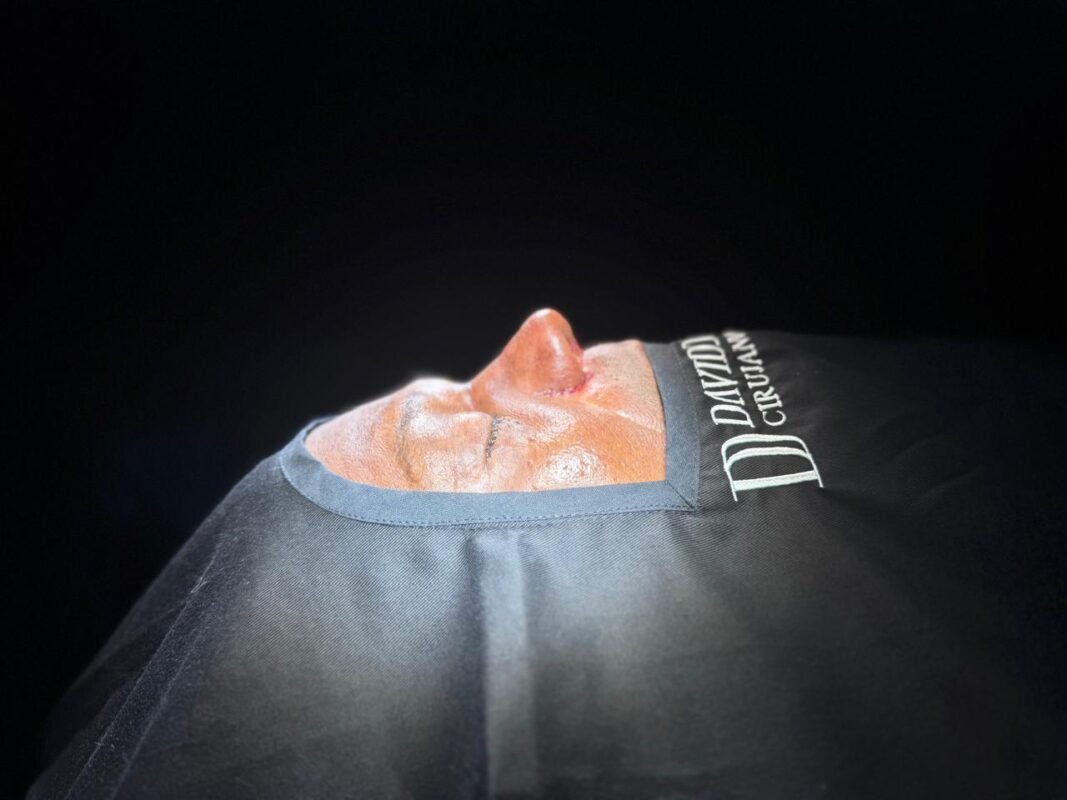
Understanding the meaning behind ethnic rhinoplasty
When people hear the word rhinoplasty, they often imagine a very specific kind of nose—small, narrow, with a high bridge and a lifted tip. That’s the classic Caucasian standard many surgeons were trained to replicate for decades. But in reality, that ideal doesn’t fit everyone—and frankly, it shouldn’t.
Why “one-size-fits-all” doesn’t work for rhinoplasty
Your nose isn’t just a feature—it’s part of a whole. Its shape, size, and projection should match your facial proportions, your skin type, and your ethnic background. That’s why ethnic rhinoplasty requires a custom approach.
In patients of African, Asian, or Middle Eastern descent, for example, I often see noses with thicker skin, less cartilage support, or a wider alar base (the part around the nostrils). Using the same techniques developed for thin-skinned Caucasian noses on these structures can lead to poor outcomes, including asymmetry, collapse, or a nose that simply doesn’t look natural on your face.
Instead, I use advanced grafting techniques—often involving cartilage from the septum, ear, or even rib—to gently build structure and definition where it’s needed, all while preserving your authentic look.
Cultural identity and facial harmony in ethnic rhinoplasty
Let’s be honest: your face tells a story. It carries the features of your ancestors, your heritage, and your uniqueness. My goal with ethnic rhinoplasty is never to erase those stories—it’s to elevate them.
For many of my patients, their nose has always felt “off” or “out of balance” with the rest of their face—but they don’t want to look like someone else after surgery. That’s where facial harmony comes in. I analyze the full face—cheekbones, lips, chin, forehead—to create a surgical plan that brings the nose into proportion, rather than forcing it into a mold it was never meant to fit.
When we do this right, the results are subtle but powerful. Most people won’t say, “Oh, you got a nose job.” They’ll say, “You look amazing—did you change something?”
Common ethnic rhinoplasty requests: from african american nose jobs to asian refinements
As a surgeon who specializes in ethnic rhinoplasty, I see patients from a wide variety of backgrounds—each with unique nasal anatomy and equally unique goals. One of the most common things I hear during a consultation is, “I want my nose to look more refined, but I don’t want to look like someone else.”
That’s exactly the balance I aim for: refinement, not replacement.
Typical characteristics of ethnic noses
Let’s break it down. While every patient is unique, certain anatomical patterns tend to appear more frequently depending on your ethnic background. Here are some general features I commonly see—and that I carefully consider when planning a procedure:
- Low nasal bridge (the area between the eyes is flatter)
- Broad nasal base and wide nostrils
- Bulbous or undefined nasal tip
- Thick, sebaceous skin that can reduce surface definition
African descent
- Low to moderate nasal bridge
- Small, short nasal bones
- Limited tip projection
- Thin to moderate skin thickness
East Asian descent
- High nasal bridge, often with a prominent dorsal hump
- Strong, well-defined nasal tip cartilage
- Thicker skin, especially in men
- Downward nasal tip rotation (which can give a “hooked” appearance)
Middle Eastern descent
- Combination of Indigenous, African, and European traits
- Medium to broad nasal base
- Varying skin thickness
- May present both a hump and under-projected tip
Latino and Mestizo descent
Understanding these typical features helps me determine which techniques, materials, and surgical goals are best suited to give you a nose that feels like your own—just more balanced, defined, and harmonious with the rest of your face.
Customizing techniques for each ethnic group
In my practice, I adapt the surgical plan based on three main factors: nasal structure, skin quality, and facial balance. For African American nose jobs, I often use cartilage grafting to increase projection and definition, especially at the nasal tip and bridge. I also perform alar base reduction, which involves narrowing wide nostrils in a way that maintains symmetry and avoids overcorrection.
For Asian rhinoplasty, I focus more on building height to the bridge using soft cartilage grafts or biocompatible implants, when necessary. In Middle Eastern patients, the challenge is often removing or reshaping the dorsal hump while maintaining strong support and a natural angle between the nose and the upper lip.
Every ethnicity brings something different to the table, and no two surgeries are the same. That’s why I never copy and paste a technique—I build it around you.
Ethnic rhinoplasty before and after: what to expect
One of the most common things patients want to know is, “What will I really look like after surgery?” That’s a fair question—especially when we’re talking about something as central to your face as your nose. In ethnic rhinoplasty, the goal is not to change who you are, but to bring out the best version of your natural structure.
Whether you’re looking for more definition, projection, or simply better balance, my approach is always conservative and respectful. You won’t walk out of my clinic with someone else’s nose—you’ll walk out with your nose, improved.
Key Improvements without erasing cultural features
Before surgery, I take time to talk with you about what you love about your nose—and what you’d like to change. Then, I analyze your facial proportions, nasal angles, and skin type to identify what’s possible and realistic.
Some of the common improvements my patients seek include:
- Lifting and refining the nasal tip without making it appear “pinched” or artificial
- Narrowing the nostrils (alar base reduction) while keeping symmetry and avoiding scars that show
- Adding projection to the nasal bridge for better profile balance
- Removing small humps or irregularities without flattening the nose
- Achieving better definition in thick-skinned noses using cartilage grafting techniques
The key is this: your ethnic identity stays intact. We’re not “Caucasianizing” your nose—we’re enhancing your features in a way that still feels like you when you look in the mirror.
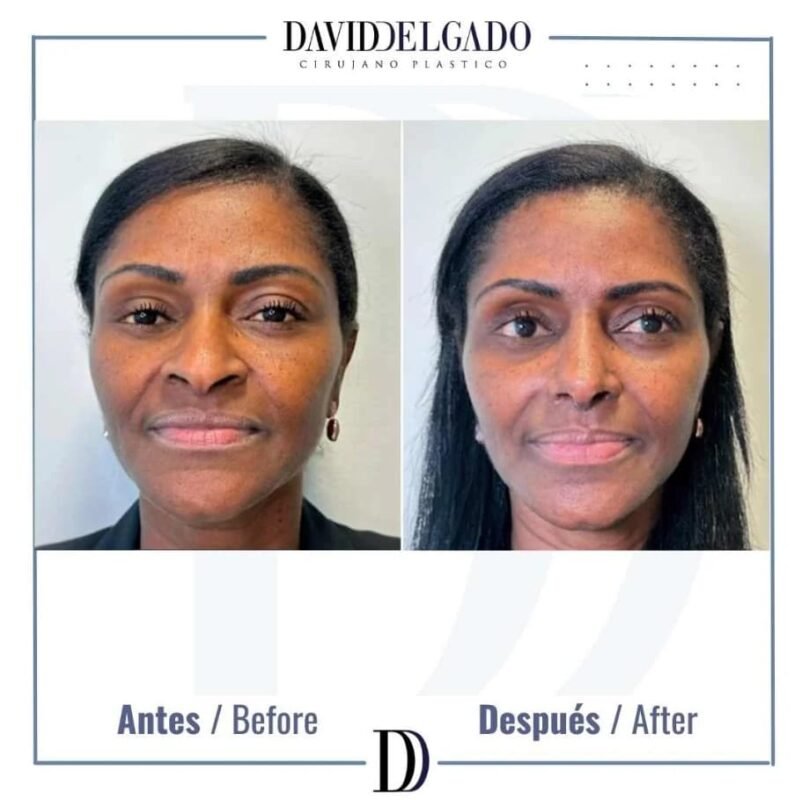
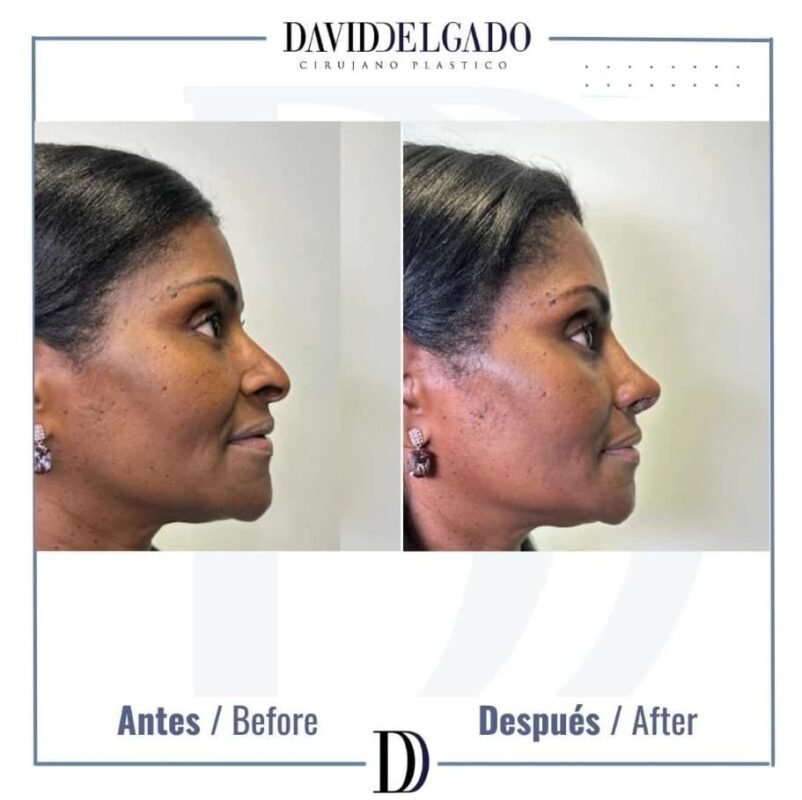
Real patient case: ethnic rhinoplasty for men by Dr. David Delgado
In this case, I worked with a patient who presented several of the most common structural features I see in Afro-descendant male patients—and together, we achieved a transformation that preserved his masculine and ethnic identity while refining the shape of his nose.
A flat bridge, wide nasal sidewalls, and weak tip support
This patient came to my office with what we call a low dorsum—meaning the bridge of his nose sat very flat, almost at the same level as the cheeks. He also had wide nasal sidewalls (the outer slopes of the nose) and an exaggerated alar flare, which refers to how far the nostrils extend outward from the face. On top of that, he had poor tip support, making the tip of the nose appear soft and undefined.
These features are completely normal in certain ethnic profiles, but they can create the impression of a nose that lacks structure or harmony with the rest of the face—especially in profile photos.
Using rib cartilage to rebuild the nose with strength and balance
To give this patient a strong and natural-looking result, I performed a complete nasal reconstruction using rib cartilage grafting. In simple terms, I removed a small section of his own rib cartilage (don’t worry—it heals very well) and used it to build a solid framework inside his nose.
With this cartilage, I:
- Elevated the nasal dorsum (the bridge) for better projection and facial proportion
- Created a defined, masculine tip with solid structural support
- Reduced the width of the nostrils through alar base reduction, which involves carefully reshaping the nostril area to avoid over-narrowing or visible scarring
Keeping masculine and ethnic identity intact
This step is always critical: no matter how much structure we add or how much width we reduce, the goal is never to erase someone’s ethnic traits or feminize a male face.
In this case, I was careful to preserve his strong angles, nasal width, and skin texture, because those are part of what defines his look as a man of Afro descent. The final result was a more harmonious nose that complements the rest of his face—without compromising who he is.
Choosing the right ethnic rhinoplasty expert
If you’ve been researching ethnic rhinoplasty near me, you’ve probably realized something: not every plastic surgeon is trained—or truly prepared—to work with ethnic features. This type of rhinoplasty requires much more than technical skill. It demands cultural sensitivity, anatomical understanding, and a commitment to preserving who you are while enhancing how you feel in your skin.
Many patients travel to Medellín because they’re looking for a specialist who knows how to work with thick skin, wide nasal bases, and complex nasal reconstruction. They want natural results—not a generic nose pulled from a textbook.
Let me introduce myself and explain why you’re in good hands.
My background and credentials: Dr. David Delgado
I’ve dedicated my career to helping patients from diverse backgrounds feel confident and empowered through aesthetic surgery that honors their identity.
Here’s a bit about my training and professional affiliations:
- Medical Doctor (M.D.) from the Universidad Industrial de Santander
- Plastic, Maxillofacial, and Hand Surgeon from the Universidad de Antioquia, one of Colombia’s most rigorous surgical programs
- Member of the Colombian Society of Plastic Surgery (SCCP)
- Member of the American Society of Plastic Surgeons (ASPS)
This means I follow international standards, stay updated with the latest techniques, and operate in fully certified surgical centers here in Medellín.
But beyond credentials, what truly matters is my approach. I listen. I plan. I personalize. And I never rush the process. When it comes to ethnic rhinoplasty, you deserve a surgeon who not only sees your features—but understands them.
Ethnic rhinoplasty near me: why many choose Medellín, Colombia
I often receive patients from the U.S., the Caribbean, and all across Latin America who come to Medellín looking for expert ethnic rhinoplasty—and they’re amazed by what they find here.
Medellín has become a top destination for high-quality, personalized plastic surgery, without the overwhelming costs you’ll often see in the U.S. But beyond affordability, what really matters is trust—and here, you’ll be treated with warmth, safety, and full transparency.
My clinic is located in Torre Médica Oviedo, one of the most modern medical towers in the city, surrounded by top-rated hotels and easily accessible from the airport. Below, you’ll find a map showing exactly where we’re located:
Office Dr. David Delgado
Torre Médica Oviedo
Calle 6 Sur # 43 A -227, office 776
Medellín, Colombia
Whether you’re visiting Medellín for surgery or simply looking to explore your options, my team and I will guide you every step of the way.
How much does ethnic rhinoplasty cost?
One of the most frequent questions I get from international patients is: “Why is rhinoplasty in Colombia so much more affordable?” And the truth is, the difference in price has nothing to do with quality—it’s all about the currency exchange.
In Colombia, you can access world-class surgical care, certified facilities, and a highly trained team for a fraction of what you’d pay in the U.S. or Europe. It’s not because we cut corners—it’s simply because the cost of living and currency conversion work in your favor.
Of course, each rhinoplasty is different. The only way to give you an accurate quote is to see your photos and evaluate your case personally.
To get started, send us your photos using the pre-consultation form, and we’ll schedule a virtual consultation so we can talk about your goals and create a personalized plan—no pressure, just clear guidance.
Comparing USA Prices with Colombian
If you’ve researched rhinoplasty prices in the U.S., you probably know it can range anywhere from $8,000 to $18,000 USD, depending on the surgeon and city. In contrast, having your ethnic rhinoplasty performed here in Colombia—by a board-certified specialist—can cost significantly less, even for less than half that price.
But here’s what matters most: the lower cost doesn’t mean lower quality. The difference comes from the currency exchange rate and lower operating costs, not from compromising medical standards. My practice meets international surgical protocols, and I use the same advanced techniques you’d find in major clinics across the U.S. and Europe.
How much does ethnic rhinoplasty cost in Colombia?
While every case is different, patients are often pleasantly surprised by the affordability of ethnic rhinoplasty in Colombia—especially when compared to prices in the United States or Canada.
If you’re ready to explore the possibilities, I invite you to schedule a virtual consultation with me. All you need to do is complete our pre-consultation form and send a few clear photos of your face and profile. That way, I can evaluate your case personally and provide an accurate, customized quote.
Let’s talk about what’s possible—not just for your nose, but for your confidence.
Best ethnic nose job: what makes results stand out?
When patients search for the best ethnic nose job, they’re not just looking for a smaller nose—they’re looking for a natural, balanced result that respects who they are. In my practice, that’s exactly what we aim for: visible improvements that still feel authentic and true to your identity.
Key elements of a successful and natural outcome
A great result comes down to more than technique. It’s about:
- Understanding your unique facial proportions
- Choosing the right surgical tools for your skin type and cartilage structure
- Prioritizing symmetry, definition, and long-term stability
Most importantly, it’s about making changes that are subtle yet transformative—the kind people notice, but can’t quite explain.
Avoiding overcorrection and preserving identity
One of the biggest risks in ethnic rhinoplasty is overcorrection—making the nose too narrow, too lifted, or simply too «generic.»
I take a conservative, tailored approach to avoid this. My goal is always to preserve your ethnic identity, not erase it. The best ethnic nose job doesn’t make you look like someone else—it makes you feel more confident in your own skin.

Ready for a rhinoplasty ethnic consultation? Contact Dr. Delgado today
If you’ve been thinking about rhinoplasty ethnic for a while, this might be the sign you’ve been waiting for. Whether you’re ready to move forward or just want expert guidance, I’m here to walk you through every step with honesty and professionalism.
You don’t need to commit to anything right away—we can simply start a conversation and explore what’s possible for your unique features and goals.
Rhinoplasty ethnic in Colombia: online consultations for international patients
I work with patients from the U.S., Canada, the Caribbean, and across Latin America every single week. That’s why I’ve made it easy to connect from anywhere in the world.
Our online consultation process is simple and secure. You send your photos, fill out a quick preform, and we’ll schedule a video call to discuss your case in detail—no obligations, no pressure.
Book now and explore your rhinoplasty ethnic options
If you’re ready to take the next step, click below to start your pre-consultation. Once I’ve reviewed your photos, we’ll set up a call to talk about your expectations, possible results, and the surgical plan that works best for you.
Let’s talk about the nose you’ve always imagined—without losing what makes you, you.
Frequently asked questions about rhinoplasty ethnic
Ethnic rhinoplasty is a specialized approach to nose surgery that respects and enhances the unique features of non-Caucasian patients. Unlike traditional rhinoplasty—which often aims to achieve Westernized nasal proportions—ethnic rhinoplasty focuses on refining the nose while preserving cultural identity, adapting to features like thicker skin, wider nostrils, or flatter bridges common in African, Asian, Middle Eastern, and Latino populations.
What is ethnic rhinoplasty and how is it different from traditional rhinoplasty?
You’re a good candidate for ethnic rhinoplasty if you’re in overall good health, have realistic expectations, and want to enhance your nose without erasing your ethnic traits. Whether you seek better definition, projection, or nostril refinement, this procedure is tailored to suit your facial proportions and cultural background with precision and respect.
Who is a good candidate for ethnic rhinoplasty?
Yes, ethnic rhinoplasty is completely safe for patients with thick skin or flat nasal bridges, as long as it’s performed by a surgeon who understands the unique anatomy involved. I often use advanced techniques such as cartilage grafting to improve definition and support, especially in cases where the skin or bone structure requires additional reinforcement.
Is ethnic rhinoplasty safe for thick skin or flat nasal bridges?
Recovery times vary, but most patients can return to work or light activity within 7 to 10 days. Swelling may take several months to fully resolve—especially in thick-skinned noses—but your results will begin to settle and become noticeable within the first few weeks after surgery.
How long does recovery take after ethnic rhinoplasty?
I typically use cartilage grafts from your own body, such as from the septum, ear (conchal cartilage), or rib (costal cartilage), depending on your needs. These grafts help provide structure, lift the nasal bridge, support the tip, or define the nose—all while being biocompatible and long-lasting.
What types of grafts are used in ethnic rhinoplasty procedures?
In many cases, yes—ethnic rhinoplasty requires more planning and precision due to variations in skin thickness, cartilage strength, and anatomical structure. That’s why it’s crucial to choose a surgeon who specializes in this procedure and has experience working with diverse ethnic backgrounds.
Is ethnic rhinoplasty more complex than other types of nose surgery?
Yes, the results are designed to be long-lasting. Once the healing process is complete—typically around 12 months—the changes are permanent. However, as with any surgical procedure, your nose may continue to subtly evolve over time due to natural aging and skin changes.
Are the results of ethnic rhinoplasty permanent?
To prepare, you’ll need to fill out a short pre-consultation form and upload clear, well-lit photos of your face from the front, both profiles, and a three-quarter angle. This allows me to evaluate your case thoroughly and discuss realistic options with you during our video consultation.
How do I prepare for a virtual consultation for ethnic rhinoplasty?
Medellín offers high-quality plastic surgery with internationally trained professionals at a much lower cost than in the U.S. Patients choose my clinic not just for affordability, but for my experience in ethnic rhinoplasty, my personalized care, and the comfort of recovering in one of Latin America’s most modern and welcoming cities.

